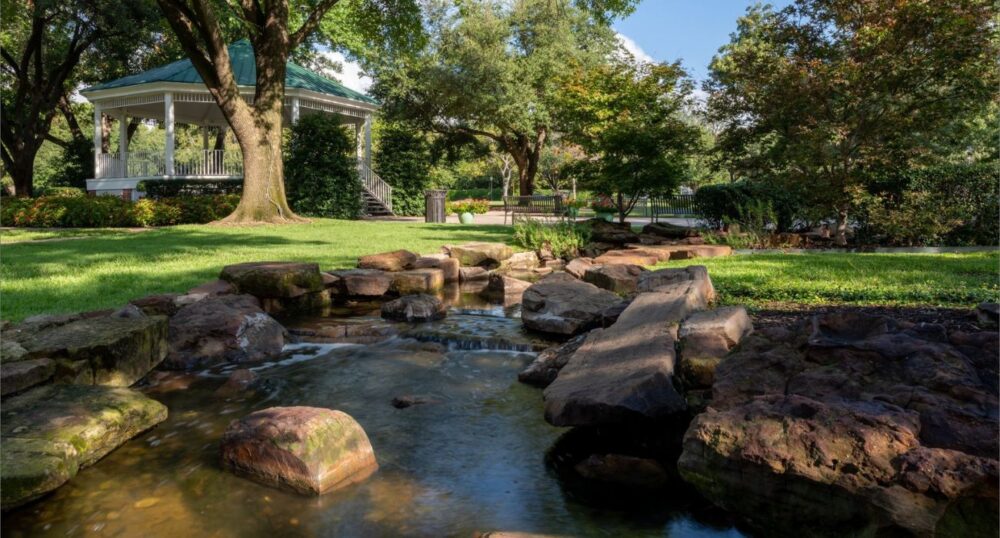The Quality of Life, Arts, & Culture Committee considered an application for a boundary adjustment with University Park near Northwest Highway on Tuesday, voting to move the measure forward to the Dallas City Council for further review.
“The area that we’re discussing is … approximately 18 acres, which includes two main properties: Boone Elementary and then the church to the west,” said Andrea Gilles, assistant director of Planning and Urban Design. “Per state law, we have to make sure that the property in question is contiguous with the requesting body. So, with University Park, the discussion had to go back to having a conversation with the church to make that area whole and contiguous with University Park.”
With a population of about 25,000, University Park is bounded by Dallas on the north, east, and west. Its southern neighbor is Highland Park.
“On July 1, 2022, the City of University Park submitted an application and payment for a boundary adjustment to remove the Michael M. Boone Elementary School property (4.6308 acres) from City of Dallas jurisdiction,” according to a staff memo. “Once staff reviewed the request, it was noted that state law requires the boundary adjustment to be contiguous to the existing city. The applicant was informed of the requirement, and the decision was made to expand the area of request to include the intermediary property containing Northway Christian Church (7.7363 acres), west of the school.”
The completed application was submitted the following June.
“The application notes the purpose of the request is to provide continuity of services between the City of University Park and HPISD schools, noting that 80 percent of students are UP residents,” the memo shows. “In all, the two properties and surrounding rights-of-way contain a total of over 18 acres of land.”
Although the school and church’s land uses do not produce a tax base, an analysis by Budget and Management Services identified potential for redevelopment at the current tax base compared to the value of more than 300 adjacent single-family lots, calculating foregone tax dollars totaling $2.9 million.
But “staff does not make recommendations for boundary adjustments,” Gilles said. “Again, if the committee acts and recommends this move to city council, that’s when all of those negotiations start. Up to this point, conversations about future revenue sharing if the properties were to ever be redeveloped into something else — we have been told very firmly that is not the case. But, again, none of us can see the future.”
Under Texas law, adjacent municipalities may make “mutually agreeable changes in their boundaries of areas that are less than 1,000 feet in width.”
“Once a resolution authorizes the negotiation and terms are met between the two parties, an ordinance with negotiated terms will return to City Council, including a service plan from the City of University Park, and the approved legal descriptions identifying the property and surrounding rights-of-way,” according to the memo. “Finally, the City of University Park will be required to adopt the area and perform the public safety and works services necessary for the adjusted area. The case is completed when staff sends a letter to the state notating the amended municipal boundaries.”
The application area is served by Dallas Water Utilities.
“I just wanted to come back around and think about the reality that we have a lot of properties in the city we don’t collect any tax revenue off of, but we still [provide city services],” Council Member Gay Donnell Willis (District 13), who sits on the committee, said. “One of the big sticking points why this has taken almost two years is concern whether this would ever be brought back to a taxable use without us having a way for [getting] any tax revenue off it.”
She called University Park “highly motivated.”
“I think any revenue sharing would be very beneficial,” Willis said. “This is just saying we’ve kicked it around and worked through some kinks at the level we are now. I’m asking we move this forward so they city managers can have a discussion. If we don’t like what they produce, we don’t have to accept it.”
Another member of the committee, Council Member Paul Ridley (District 14), said he does not think adjusting the boundary is necessary.
“I don’t see any advantage of us doing this. I think we ought to consider an [interlocal agreement] or a [memorandum of understanding] that could accomplish what they’re desiring without giving up permanently a part of Dallas. I think it’s a bad precedent giving up land from the city. I just don’t like the idea that we’re abandoning some of our property to an adjacent city that thinks they can service it better than we can.”
Council Member Jaynie Schultz (District 11) is also a Quality of Life, Arts, & Culture Committee member. She said she has “many concerns about this.”
“We are having a similar request from another adjacent city. First of all … the majority of that property is not a school but a church. I don’t know that the cost savings that my colleague mentioned — I have no idea what those are. The other piece that I’m equally concerned about is any kind of permanent arrangement.”
Service delivery over the last five years shows that Dallas police reported 23 calls, including four “related to violence” in the application area. Dallas Fire-Rescue reported 10 runs, with average response times of just under six minutes. The department has an “Automatic Assistance Agreement” with University Park that “authorizes the two cities to service the area and share resources at no cost,” per the memo.


